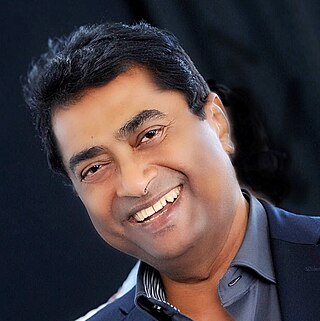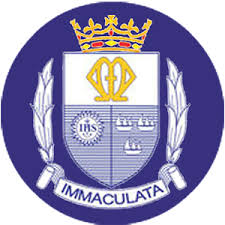Related Research Articles

Officially, the Basilica of Our Lady of the Mount, colloquially known as Mount Bandra and Mount St Mary Church; is a basilica (shrine) of the Roman Catholic Church, located at the Bandra neighbourhood of Bombay (Mumbai), India.

Abraham Thomas Kovoor was an Indian professor and rationalist who gained prominence after retirement for his campaign to expose as frauds various Indian and Sri Lankan "god-men" and so-called paranormal phenomena. His direct, trenchant criticism of spiritual frauds and organized religions was enthusiastically received by audiences, initiating a new dynamism in the Rationalist movement, especially in Sri Lanka and India.

"Jesus wept" is a phrase famous for being the shortest verse in the King James Version of the Bible, as well as in many other translations. It is not the shortest in the original languages. The phrase is found in the Gospel of John, chapter 11, verse 35. Verse breaks—or versification—were introduced into the Greek text by Robert Estienne in 1551 in order to make the texts easier to cite and compare.

A weeping statue is a statue which has been claimed to have shed tears or to be weeping by supernatural means. Statues weeping tears which appear to be blood, oil, and scented liquids have all been reported. Other claimed phenomena are sometimes associated with weeping statues such as miraculous healing, the formation of figures in the tear lines, and the scent of roses. These events are generally reported by Catholics, and initially attract pilgrims, but are in most cases disallowed by the Church as proven hoaxes.
Joseph Edamaruku, popularly identified by his surname Edamaruku, was a journalist and rationalist from Kerala. He was the Delhi Bureau chief of the Malayalam magazine Keralasabdam for more than twenty years, and the founder-editor of Therali, a rationalist periodical in Malayalam. He was president of the Indian Rationalist Association from 1995 to 2005.

Sanal Edamaruku is an Indian author and rationalist. He is the founder-president and editor of Rationalist International, the president of the Indian Rationalist Association and the author of 25 books and other articles. In 2012, after examining an alleged miracle at a local church in Mumbai, he was charged under India's blasphemy law, causing him to voluntarily exile to Finland.
The Indian Rationalist Association is a voluntary organisation in India whose 100,000 members promote scientific skepticism and critique supernatural claims. It publishes books and magazines, organises seminars and lectures and its representatives regularly appear in television and print media exposing superstitions. The present president of Indian Rationalist Association Sanal Edamaruku was elected in 2005. He was the General Secretary of the association from 1984 till 2005.

St. Mary's School, Mumbai or St. Mary's School I.C.S.E, is a private Catholic secondary school for boys, soon to turn into a co-education school, located in Mazagaon, Mumbai, in the state of Maharashtra, India. Founded by the Jesuits in 1864, the school is affiliated with the Indian Certificate of Secondary Education (ICSE). The school is amongst the oldest, continually running, private schools in India. It is also ranked amongst the top elite day schools in the country.

The Roman Catholic Archdiocese of Bombay is a particular church celebrating the Latin Rite of worship, centred in the Bombay (Mumbai) city of the northern Konkan division of Maharashtra, India. The archdiocese has been a Metropolitan see since its elevation, by Pope Leo XIII on 1 September 1886.

Narendra Achyut Dabholkar was an Indian physician, social activist, rationalist and author from Maharashtra, India. In 1989 he founded and became president of the Maharashtra Andhashraddha Nirmoolan Samiti. Triggered by his assassination in 2013, the pending Anti-Superstition and Black Magic Ordinance was promulgated in the state of Maharashtra, four days later. In 2014, he was posthumously awarded the Padma Shri for social work.

Koli Christians are subgroup of the Koli people, known as Bombay East Indians, the indigenous people of the Seven Islands of Bombay and the Bombay metro area, which is now also called Mumbai (Bombay). The Koli Christians were of the Son Koli caste, before their conversion by the Portuguese from Brahmanism to Christianity, in the former Bom Bahia of Portuguese India. Christian Kolis are also known as Thankar and Gaonkar Kolis in Maharashtra, where they played an important role in building churches and convents in the northern Konkan division of Maharashtra.

The Bandra Fair is a week-long fair held annually in the Bandra suburb of Mumbai (Bombay), India. It starts on the Sunday following the 8th of September at Mount St Mary Church; the festival of the Nativity of Our Lady, the virgin-mother of Jesus Christ.
Around 0.7 million people in India did not state their religion in the 2001 census and were counted in the "religion not stated" category. They were 0.06% of India's population. Their number has significantly increased four times, from 0.7 million in the 2001 census to 2.9 million in the 2011 census at an average annual rate of 15%. According to the 2012 WIN-Gallup Global Index of Religion and Atheism report, 81% of Indians were religious, 13% were non-religious, 3% were convinced atheists, and 3% were unsure or did not respond, while a demographic study by Cambridge University Press in 2004 found that around 2-6% of Indians identified as atheists or irreligious.

St. Michael's Church is one of the oldest Catholic churches in the Mahim suburb of Mumbai (Bombay), India.

Christianity is a minority religion in Maharashtra, a state of India. Approximately 79.8% of the population of Maharashtra are Hindus, with Christian adherents being 1.0% of the population. The Roman Catholic archdiocese whose seat is in Maharashtra is the Roman Catholic Archdiocese of Bombay. There are two different Christian ethnic communities in Maharashtra: the Bombay East Indians, who are predominantly Roman Catholic, and the Marathi Christians, who are predominantly Protestant with a small Roman Catholic population.
The hate speech laws in India aim to prevent discord among its many ethnic and religious communities. The laws allow a citizen to seek the punishment of anyone who shows the citizen disrespect "on grounds of religion, race, place of birth, residence, language, caste or any other ground whatsoever". Section 153A of the Indian penal code prohibits citizens from creating disharmony or feelings of enmity, hatred or ill-will between different groups of people.
There is a small community of Indians in Finland consisting mainly of Finnish citizens of Indian origin or descent as well as expatriates from India.

The Cathedral of Our Lady of Miracles, Indo-Portuguese; Catedral de Nossa Senhora dos Milagres, is a Roman Catholic Cathedral situated at Kallianpur in the Udupi district of Karnataka, India.

Holy Cross Church, Kurla is a Roman Catholic Church in Kurla, a suburb of Mumbai, India. It was built during the Portuguese era by the Jesuits in 1588 and rebuilt in 1848. It is one of the oldest churches in Mumbai. The church belongs to the Archdiocese of Bombay.
Superstition refers to any belief or practice that is caused by supernatural causality, and which contradicts modern science. Superstitious beliefs and practices often vary from one person to another or from one culture to another.
References
- ↑ "Water from the cross of Irla. Indian atheist accuses Church of". Archived from the original on 12 November 2020.
- 1 2 "Why Jesus wept in Mumbai: The church versus the rationalist". 28 November 2012. Archived from the original on 25 September 2019.
- ↑ A Rationalist Fights to Disprove Miracles in India (Audio file). Public Radio International. 23 November 2012.
- ↑ "Blasphemy law is unworthy of secular democracy". Firstpost. 4 December 2012. Retrieved 27 October 2019.
- 1 2 McDonald, Henry (23 November 2012). "Jesus wept … oh, it's bad plumbing. Indian rationalist targets 'miracles'". The Guardian . ISSN 0261-3077 . Retrieved 25 September 2019.
- ↑ "Withdraw case against Sanal – John Dayal, Veteran journalist and member, National Integration Council – The Sunday Indian". www.thesundayindian.com. Retrieved 27 October 2019.
- ↑ "'Rampal is a fraudster who exploits the gullible common man'". Hindustan Times. 19 November 2014. Retrieved 6 February 2023.
- ↑ "Miracle in Irla brings Christians, Hindus and Muslims together in prayer". www.asianews.it. 14 March 2012. Retrieved 28 October 2019.
- ↑ "Church reacts to Irla cross incident | Mumbai News – Times of India". The Times of India. The Times of India. 12 March 2012. Retrieved 28 October 2019.
- ↑ White, Jon. "Miracle buster: Why I traced holy water to leaky drain". New Scientist . Retrieved 25 September 2019.
- ↑ "Why Jesus wept in Mumbai: The church versus the rationalist". Firstpost. 28 November 2012. Retrieved 25 September 2019.
- 1 2 3 4 Dissanayake, Samanthi (3 June 2014). "The miracle-buster afraid to go home". BBC . Retrieved 25 September 2019.
- ↑ "Indian rationalists use Facebook to fight intolerance". BBC. 20 October 2015. Retrieved 25 September 2019.
- ↑ Brady, Kathy (July 2012). "Erlich, Radio Utopia: Postwar Audio Documentary in the Public Interest". Journal of Radio & Audio Media. 19 (2): 322–324. doi:10.1080/19376529.2012.722493. ISSN 1937-6529. S2CID 143793845.
- ↑ Priyanka Dube (4 December 2012). "Indian rationalist stays in Finland fearing arrest for hurting religious sentiments". News18. Archived from the original on 8 December 2012. Retrieved 4 November 2019.
- ↑ "A Matter of Very Great Concern". archive.randi.org. Retrieved 25 September 2019.
- ↑ "Support pours in for Indian rationalist forced to live in Finland". News18. Retrieved 25 September 2019.